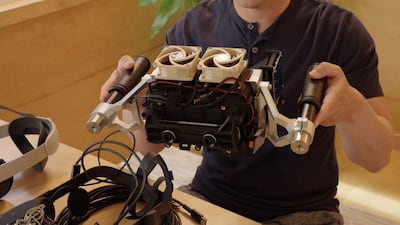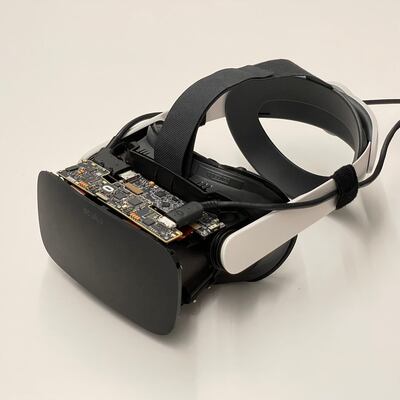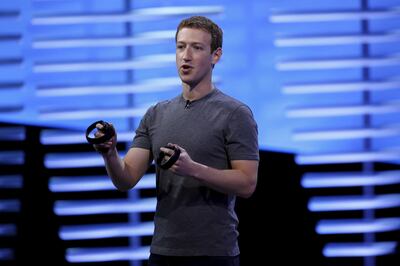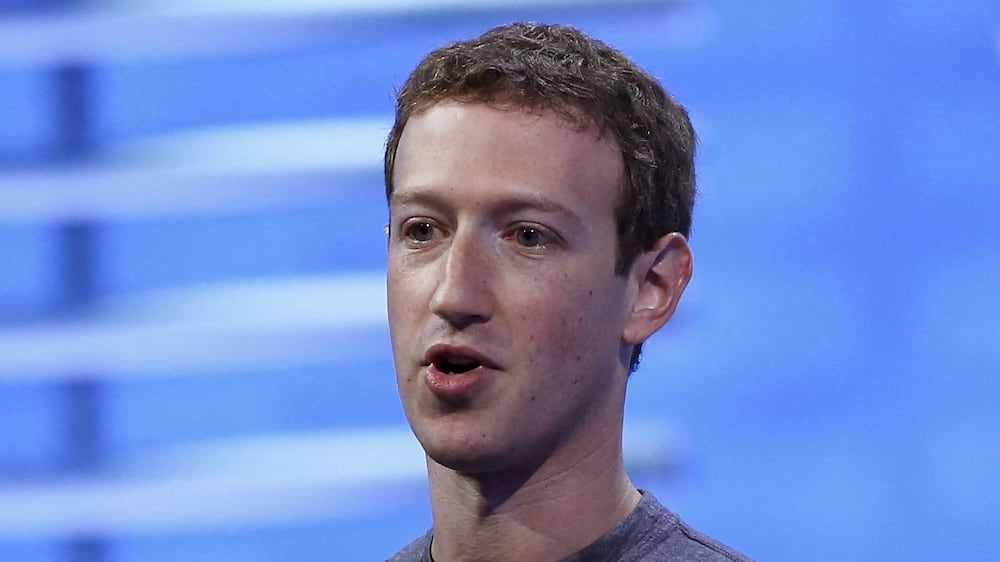Facebook's parent company Meta has unveiled four virtual reality (VR) prototype displays for research purposes as it seeks to achieve the full potential of metaverse technology, which is being seen as the future of business and human interaction.
The models are intended to deliver visual experiences that are almost “indistinguishable from reality” and solve problems such as poor resolution, distorted views and eye fatigue while making headsets lighter, the company said during a media round-table.
“We still have a long way to go in the displays and graphics stacks before we can get to visual realism,” founder and chief executive Mark Zuckerberg told reporters.
“This is a much more complex problem than just displaying a realistic-looking image on a computer screen or a TV … we have solved some of these challenges already, and for others, there is still a lot of work to do.”
Today’s VR headsets deliver 3D visual experiences but user experience still differs in many ways from what they see in the real world.
For example, the headsets have a lower resolution than laptops, TVs and phones, while the lenses distort the wearer’s view and the devices cannot be used for long periods of time.

Meta said it is “looking at the real world in VR” and it is building a VR display that is light and capable of delivering what human eyes need to function naturally.
The company’s display systems research team at Reality Labs division is developing a new stack that includes “varifocal” technology to ensure the focus is correct and enables clear and comfortable vision for extended periods of time.
It is also working on distortion correction to address optical aberrations such as warping and colour fringes, introduced by viewing optics.
It intends to achieve resolution that approaches or exceeds 20/20 or 6/6 human vision and a technology that expands the range of colour, brightness and contrast in VR.
One of the major challenges is that the lenses used in current VR displays often distort the virtual image, and that reduces realism unless the distortion is fully corrected in software, said Michael Abrash, chief scientist at Meta’s Reality Labs.
“Distortion varies as the eye moves around to look in different directions.

“Headsets can be hard to use for extended periods of time because of that distortion and also because of the headset's weight, both of which can cause some temporary discomfort and fatigue … another key challenge is around the ability to focus at any distance,” Mr Abrash said.
The National explores the new VR prototypes that Meta is working on.
Butterscotch
The Butterscotch prototype has enough resolution to ensure users can read the 20/20 vision eye chart — the term used to express normal visual sharpness measured at a distance of six metres (20 feet).
It is a “custom and bespoke” model that Meta has built in its lab. However, the product is not ready to ship yet, the company said.
“As soon as we started testing this, it became pretty clear that true realism needs that certain level of resolution. And what we expect is that the display panel technology is going to keep improving generation after generation. And in the next few years we are probably going to get there, somewhere like that,” Mr Zuckerberg said.
Starburst
Starburst is Meta’s prototype High Dynamic Range (HDR) VR headset. HDR is the ability of a monitor to display better contrast ratio and brighter colours.
One of the key metrics to achieve better HDR is nits — or how much light an object emits. Research reveals the ideal number for peak brightness is 10,000 nits, and the TV industry has come closer to it.
Starburst reaches 20,000 nits, one of the brightest HDR displays yet built. In VR, the maximum nits are 100 in Meta’s Quest 2, the company said.
“Getting beyond that, while keeping a form factor that is wearable, is a big challenge. The Starburst prototype is bulky, heavy and tethered. People hold it up like binoculars,” Meta said.
Mr Zuckerberg said they were “using it to test and for further studies so we can get a sense of what the experience feels like”.
Holocake 2
The Holocake 2 is the thinnest and lightest VR headset Meta has ever made.
However, it requires special lasers that are different from the LEDs used in today's VR headsets. Lasers are not found in a lot of consumer products at the performance size and price needed for consumer VR headsets, Mr Abrash said.

“So, we will need to do a lot of engineering to achieve a consumer viable laser that meets our specs — that is safe, low-cost and efficient, and that can fit in a slim VR headset.
“The jury is still out on finding a suitable laser source but if that proves tractable, there will be a clear path to sunglasses-like VR displays,” Mr Abrash said.
Mirror Lake
Mirror Lake is a concept design with a ski goggles-like form factor. It will integrate nearly all of the advanced visual technology that Meta has been developing over the past seven years, including varifocal and eye-tracking solutions, into a compact, lightweight and power-efficient form factor, the California-based company said.
“The end product can pack more functionality into a smaller package than anything that exists today,” Mr Abrash said.
“Mirror Lake concept is promising but right now, it is only a concept with no fully functional headset yet built to conclusively prove out the architecture. But if it does pan out, it will be a game changer for the VR visual experience,” he said.
How big is the market?
The augmented reality and VR headset market jumped more than 90 per cent on an annual basis in 2021 to more than 11 million units, according to a report by International Data Corporation.
Meta’s Quest 2 headset dominated the market with more than three quarters of the share. It is also expected to release a new mixed-reality headset in the coming months.
“We are working to invent displays that are vivid and realistic … and much more advanced than traditional computer screens we use today. There is still long way to go but I am excited to bring this tech to our products in the coming years,” Mr Zuckerberg said.
Last month, Apple’s board of directors reportedly previewed its mixed-reality headset, indicating that company could soon launch a new product category.







